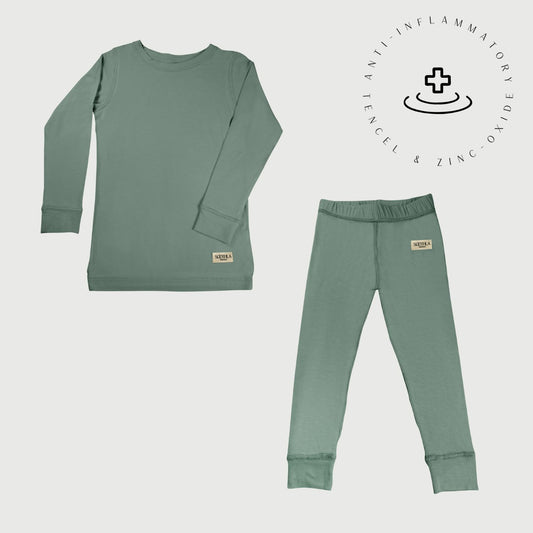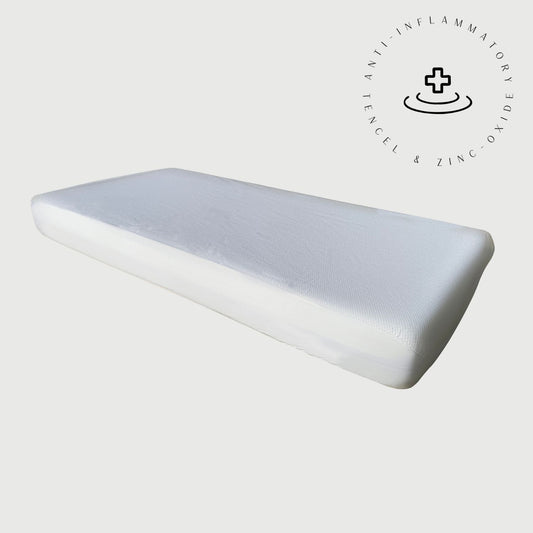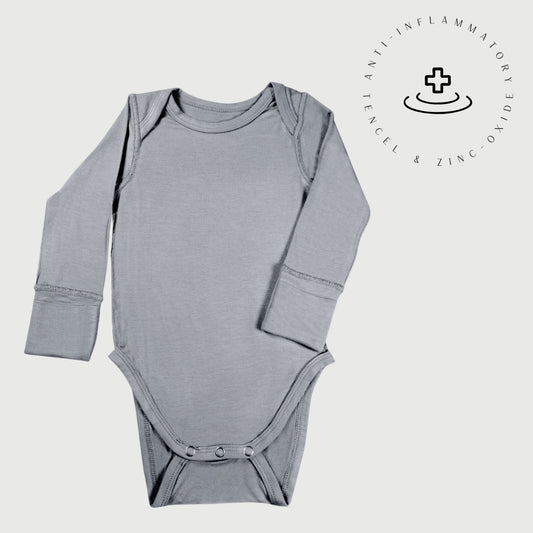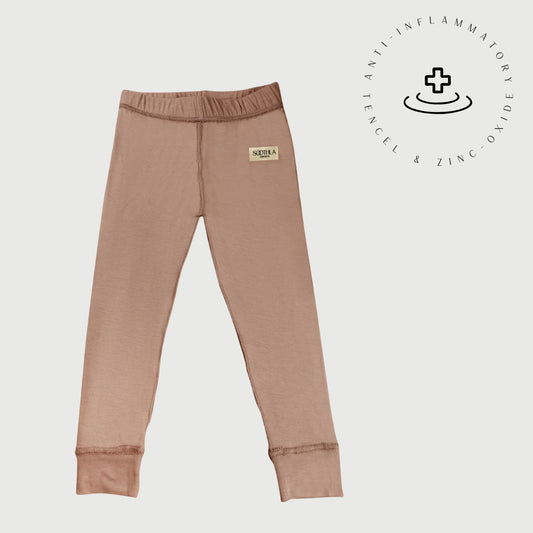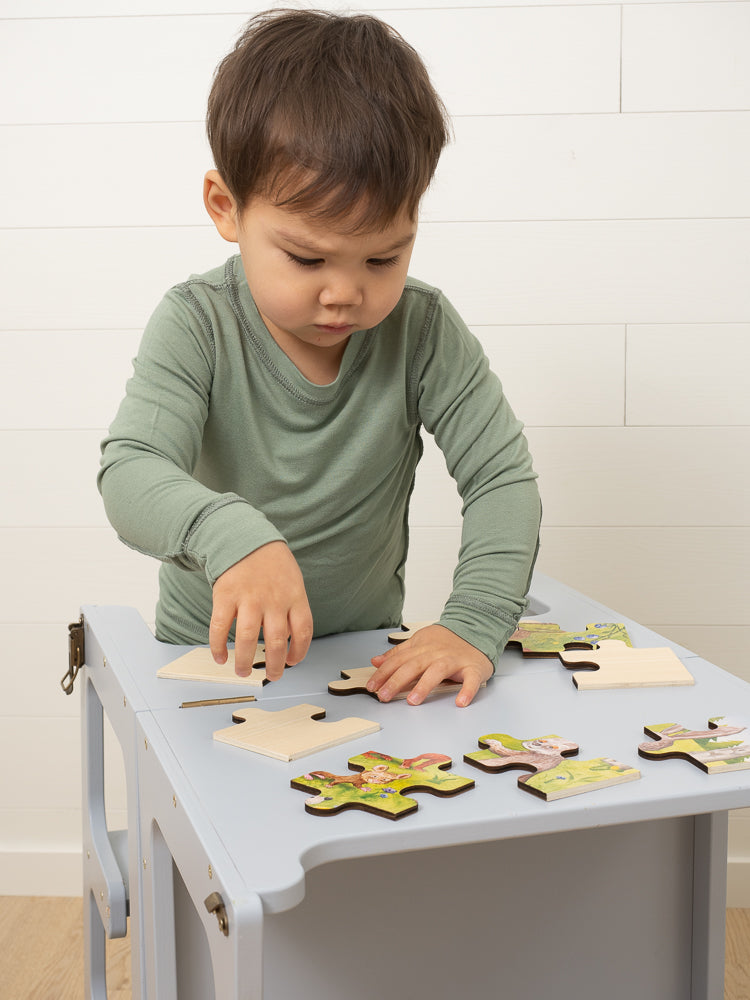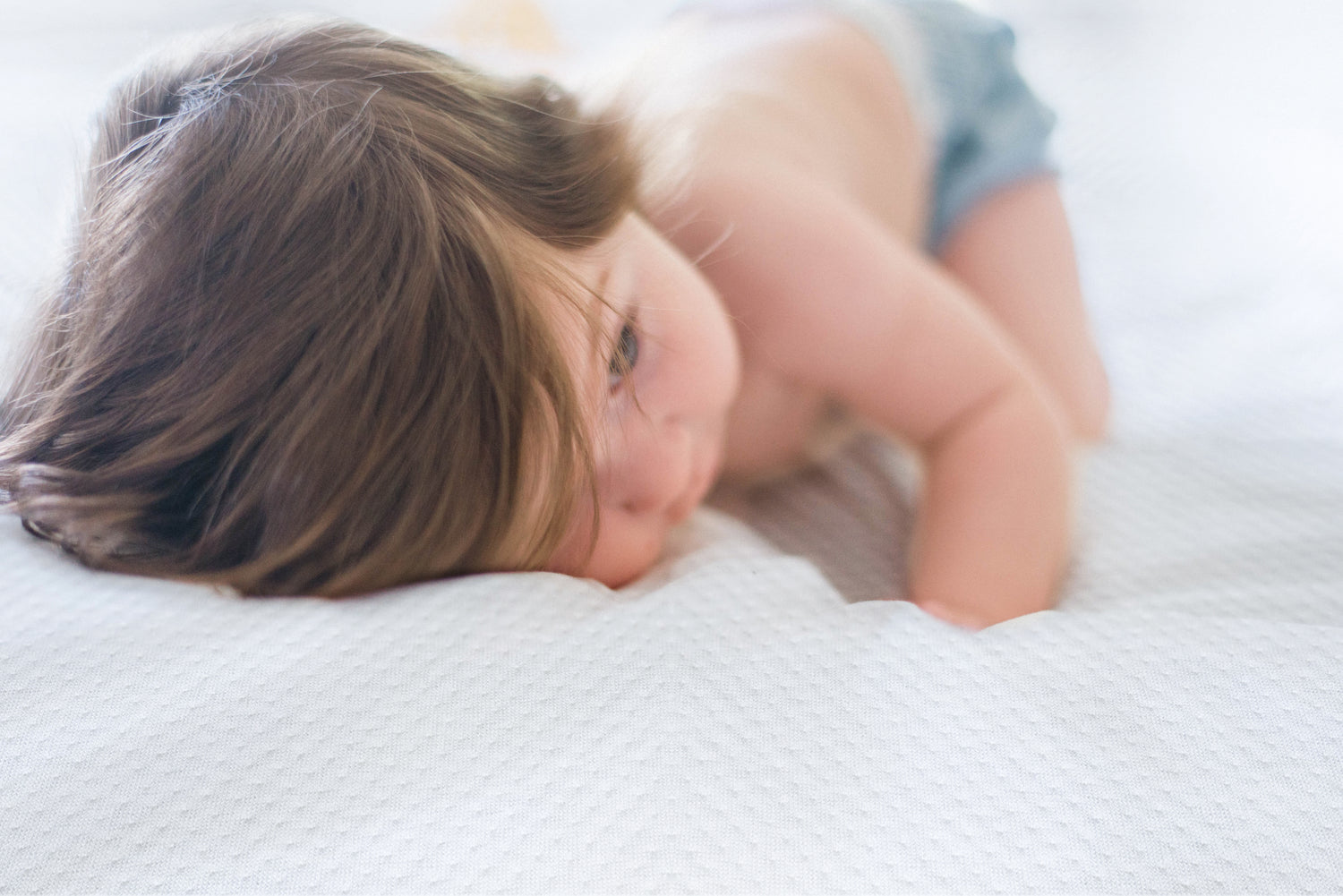This article was last updated on 10 November 2023
Children up to 6 years old spend more than half of their lives sleeping. That’s more than 26.280 hours of sleep! This might not be the case for your child if they suffer from sensitive skin, dry skin, eczema, or respiratory allergies.
Sleep is vital to children and babies because of the rapid brain development and growth that they’re experiencing during this age. Sensitive or dry skin and eczema can, unfortunately, limit the amount of sleep a child gets due to the terrible itchiness.
We have compiled a list of 6 tips to help your child get the sleep they deserve!
1. Moisturize the skin before going to bed
When your child has sensitive, dry skin or eczema, it's important to use a moisturizer. Dry skin can often make eczema worse. Apply a thick moisturizing cream about 30-60 minutes before bedtime to allow the ointment to sink well into the skin.
If your child has eczema, consult your healthcare professional about which moisturizing cream is best suitable for their skin.
2. Choose skin-friendly sleepwear
Some clothing can cause irritation to the skin depending on which material it is made out of. Other than rough, scratchy, or tight clothing you should avoid synthetic materials and wool (with the exception of superfine merino wool).
The best-suited fabrics for eczema or sensitive skin are fabrics made of organic cotton, lyocell, and bamboo.
Our eczema clothing is made from a fabric combination that has been scientifically proven to actively treat and calm dry, sensitive, eczema skin when worn directly on the skin for 3 consecutive nights.
All SOOTHLA clothing is free from itchy inside labels and has a seamless design to avoid irritating the skin.
3. Prevent night-time scratching
Many children (and adults) with sensitive, dry skin and eczema scratch their dry patches at night making the condition worse.
To reduce the risk of scratching we advise to always keep your child’s nails trimmed and neat.
Soft anti-scratch gloves that cover the fingernails can also help to prevent scratching.
Our Baby Body has anti-scratch mittens attached to the sleeves that can be folded over to prevent nightly scratching.
4. Choose skin-friendly bedding
Your choice of bedding is a big part of improving your child’s sleep quality.
The bedding should be made of soft and breathable fabrics that can stand being washed frequently, to remove eventual dust mites and skin debris.
Our allergy-friendly SOOTHLA bedsheets and pillowcases are super soft, hypo-allergenic, antibacterial, and dust-mite-proof, making them perfect for children with sensitive skin, eczema, and respiratory allergies such as asthma or bronchitis.
5. Adjust the thermostat
Body temperature plays a significant role in how to ease skin irritations in your child. The hotter they are, the worse eczema or dry skin tends to be.
Turn down the heat before bedtime so the room feels nice and cool. Don’t forget that a cool and ventilated room is important even in the winter months.
It’s also a good idea to invest in an air humidifier to increase the moisture in the air. More moisture in the air creates optimal breathing conditions and can help reduce and loosen up the build-up of mucus. This is especially important if your child suffers from respiratory issues.
Unfortunately, there is no such thing as a universal temperature that works for everyone, so experiment with which temperature works best for your child.
6. Establish a consistent bedtime routine
The same habits that help children without eczema sleep more soundly also apply to those with eczema. There have already been many blogs and articles written about how to establish a consistent bedtime routine, so we will not dive into this too deep, but here are a few things one can do:
- Stop the use of electronics/screens at least an hour before bed
- Take a lukewarm oat bath
- Do a quiet family activity such as reading a short book
- Dim the lights and try to make the room as dark as possible


